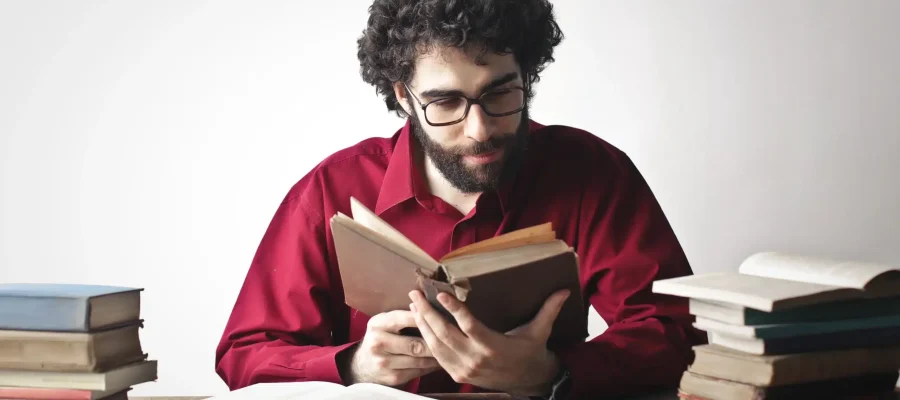
You’ve written your story. Maybe it’s fiction, a memoir, or a guide based on years of experience. And now you’re staring at the big question: should you go solo or knock on a publisher’s door? To get your book published, you need to first understand what each path really looks like—and more importantly, what fits your goals.
Self-publishing in India is on the rise, yes. But that doesn’t mean it’s for everyone. This guide walks you through the benefits, trade-offs, and key choices involved in taking the self-publishing route in 2025. And if you decide you want the support of a publishing house, the team at Anecdote Publishing House is right here to guide you.
Let’s break it all down—from creative freedom to credibility concerns.
It’s not a passing trend anymore. From debut authors to experienced voices trying something new, self-publishing has become a legitimate path to getting published. In fact, with platforms like Amazon KDP, Notion Press, and White Falcon, publishing a book today is technically easier than ever before.
But ease doesn’t always equal success. It’s crucial to weigh the pros and cons—and to ask, does this route serve your long-term vision as a writer?
You control the cover, the title, the timeline, and even the font. There’s no one asking you to change a plot twist or shorten a chapter for “marketability.” For many authors, that’s liberating.
Self-publishing lets you go live in weeks. Traditional publishing can take over a year—after the contract is signed. That’s a huge difference if your book is timely or you’re building momentum.
Traditional publishers usually offer 7–15% royalties. Self-published authors can earn up to 70%, especially on digital platforms. If your book sells, the payout is significantly higher.
You own the reader journey. You can build an email list, launch your own marketing campaigns, or create spin-offs and sequels without waiting for approval.
Do you want to publish a novella, a poetry photo book, or a bilingual children’s title? No problem. Self-publishing allows for creative risks that traditional publishers might not bet on.
No editor, no publicist, no distributor—you’re doing it all or hiring professionals yourself. This includes editing, typesetting, cover design, ISBN registration, and marketing.
While it’s technically free to upload a manuscript on many platforms, professional self-publishing costs money. A good cover designer, developmental editor, and typesetter don’t come cheap.
Self-published books often struggle with discoverability. You’re unlikely to land bookstore space or media coverage without serious effort or ad spend.
There’s still a lingering bias. Many literary circles and reviewers give more attention to traditionally published books. It can take longer to earn credibility as a self-published author.
Most literary awards and school/university catalogues lean toward traditional publishing. If your book is aimed at institutions, this could be a blocker.
It works beautifully for authors who:
But if you’re looking for national bookstore placement, structured editorial support, or access to institutional buyers—then traditional publishing through a reputed publishing house may make more sense.
Anecdote Publishing House helps new authors figure this out. Through their submission portal, they guide you toward the right next step—whether it’s traditional publishing, assisted self-publishing, or something in between.
Let’s talk about authors who’ve taken different routes to success—and how their publishers played a role in shaping their literary careers.
He cracked the code of mass appeal with titles like Five Point Someone and 2 States. Rupa’s pricing and reach helped get his books into the hands of millions.
The Monk Who Sold His Ferrari is practically a rite of passage for personal growth readers. Jaico’s commitment to transformational literature helped Sharma’s work go global.
She’s one of India’s top self-publishing success stories. Her first book took off independently, and Westland helped scale her reach. A brilliant example of hybrid publishing done right.
Known for telling startup stories that resonate with young India, Bansal’s books have flourished under top publishing banners, reaching both urban readers and college students.
Myth meets modern in his Shiva Trilogy. Westland gave him his big break, and HarperCollins expanded his reach into international markets. One of the best genre success stories out there.
Roy’s work goes far beyond national borders. Penguin’s global distribution and credibility helped her reach readers around the world with award-winning fiction and activism-driven non-fiction.
Combining philosophy with gripping narratives, Bajaj’s novels reflect spiritual themes that appeal to today’s young professionals. HarperCollins backed him all the way.
Her stories—warm, wise, and deeply rooted in Indian culture—are available in every format and every language, thanks to Penguin’s aggressive outreach.
Whether it’s Business Sutra or My Gita, his work bridges mythology and leadership. Backed by publishers who understand both genres, Pattanaik has carved a unique niche.
A top voice in wellness and nutrition, her books benefit from Westland’s clever placement—in bookstores and lifestyle outlets alike.
Each of these authors chose a path that aligned with their voice and vision. And just as importantly, their publishers believed in that vision and knew how to position it.
It can be, especially if you’re confident in your work and ready to learn the ropes of promotion and design.
Yes. Many traditional publishers are open to authors with self-published titles, especially if they’ve shown some traction.
You can start for free using online tools, but a quality book may require an investment between ₹20,000 and ₹80,000 depending on services used.
Yes. Anecdote works with authors at different stages—whether you’re looking to get your book published traditionally or explore assisted publishing options.
There’s no one-size-fits-all answer. The decision to self-publish or go traditional depends on your goals, time, budget, and personality as a writer. Want full freedom, speed, and a DIY attitude? Self-publishing may be your route. Want guidance, reach, and prestige? Traditional publishing has its strengths.
In both cases, the reader comes first. Write for them. Publish for them. Grow with them. And if you’re ready to take the next step, consider reaching out to Anecdote Publishing House. They’re not just a publishing house—they’re a partner for your literary journey.